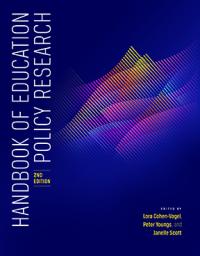Efficacy of Early Care and Education
AERA members: Please enter your coupon code in the shopping cart coupon discount field.
Efficacy of Early Care and Education
Margaret Burchinal
Diane Early
Iheoma U. Iruka
Click here to view and purchase Handbook of Education Policy Research, 2nd Edition
Title information
This chapter briefly reviews the history of early care and education (ECE) in the United States; ECE’s conceptual frameworks; the quality, quantity, and types of ECE; and the extent to which it promotes early and longer-term learning and development. The authors address ECE quality, ECE-related early learning and development, and racial, linguistic, and income inequities in ECE access. ECE is now normative, with most children in the United States attending ECE prior to elementary school. Home-based care is most common for infants and toddlers, center-based care for preschoolers. Within ECE, frequent and responsive teacher-child interactions and access to age-appropriate activities appear to modestly promote cognitive and social development. Publicly funded programs like Head Start and most prekindergarten programs provide subsidized ECE to children from low-income families and successfully promote school readiness skills, especially early academic skills. However, the impacts of today’s programs largely disappear in the first years of elementary school and are negative in some of the methodologically most rigorous studies. The authors discuss explanations for this “fade-out.” Finally, they review other ECE initiatives, such as quality rating and improvement systems and subsidized child care.
Keywords: early care and education; ECE quality; ECE and school readiness; ECE fade-out; quality rating and improvement systems; child care subsidies

